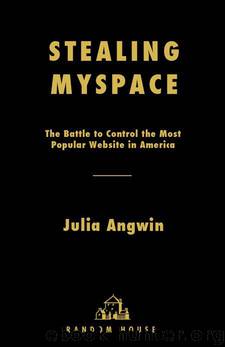Stealing MySpace: The Battle to Control the Most Popular Website in America by Angwin Julia

Author:Angwin, Julia [Angwin, Julia]
Language: eng
Format: mobi
Publisher: Random House
Published: 2009-03-16T16:00:00+00:00
To get advertisers on board, Levinsohn had to clean up MySpace's image. It was a difficult technical task, made trickier by the fact that MySpace didn't want to scare its users with strong-armed censorship techniques.
Feffer already had dozens of people looking at hundreds of images an hour and choosing which ones to delete. The rules were simple but hard to automate with computers: A bare bottom is not okay, but a bare bottom with a tiny thong passes muster; bare breasts are not okay, but bare breasts with the nipples covered with tape are acceptable.
A field of science called “computer vision” aims to teach computers how to make such distinctions. But so far it's been slow going. In the late 1990s, researchers David Forsyth and Margaret Fleck published a paper about a computer program that aimed to identify pornography through skin colors and body configurations. The program correctly identified only 43 percent of the nude pictures it viewed and misidentified 4 percent of the non-nudes. One of the misidentified pictures was a picture of an apple pie with a lattice crust; the computer identified the flesh-colored pieces of crust as limbs.
Since then, most computer vision programs take a different approach. They feed pornographic images into a computer and command it to find common characteristics of the photos. The computer can then rate each photo on a scale of how similar it is to the pornographic images. These systems are often better at finding nude pictures, but they frequently misidentify a lot of non-nude images as well, so human checkers still need to do a final check before images are deleted. Still, these systems allow the human checkers to prioritize their viewing so that they can first look through images that the computer has deemed likely to be inappropriate. So MySpace began testing an expensive computer system that could prioritize likely porn, while also beefing up its staff of human censors.
But that didn't solve the problem of photographs that were stored on sites other than MySpace. In December MySpace began pressuring third-party photo storage sites such as Photobucket to start scanning photographs as well. Photobucket, which had venture capital backing and was hoping for a public offering, couldn't afford to alienate MySpace. Starting in January Photobucket hired seven people to scan all the photographs being loaded onto its system.
Levinsohn thought it was risky to rely on third parties to censor photos for MySpace. He urged MySpace to buy a photo storage company of its own and stop relying on outside vendors. But Chris DeWolfe and Anderson opposed the idea; Anderson said he would rather build additional photo storage from scratch.
Eventually, MySpace pushed its crackdown on pornography too far. Worried that pornographic videos were slipping through the cracks through another third-party website, YouTube, MySpace shut down the links to YouTube a few days before Christmas. “There wasn't a way to catch people posting explicit clips,” Levinsohn said.
YouTube was the video equivalent of Photobucket. Since MySpace didn't have the capacity to store videos,
Download
This site does not store any files on its server. We only index and link to content provided by other sites. Please contact the content providers to delete copyright contents if any and email us, we'll remove relevant links or contents immediately.
Tools of Titans by Timothy Ferriss(8218)
Change Your Questions, Change Your Life by Marilee Adams(7635)
Deep Work by Cal Newport(6879)
Man-made Catastrophes and Risk Information Concealment by Dmitry Chernov & Didier Sornette(5921)
Playing to Win_ How Strategy Really Works by A.G. Lafley & Roger L. Martin(5917)
Digital Minimalism by Cal Newport;(5664)
Big Magic: Creative Living Beyond Fear by Elizabeth Gilbert(5610)
The Slight Edge by Jeff Olson(5346)
Ego Is the Enemy by Ryan Holiday(5294)
The Motivation Myth by Jeff Haden(5156)
Stone's Rules by Roger Stone(5026)
The Laws of Human Nature by Robert Greene(4997)
Tuesdays with Morrie by Mitch Albom(4690)
Eat That Frog! by Brian Tracy(4434)
Rising Strong by Brene Brown(4377)
Skin in the Game by Nassim Nicholas Taleb(4162)
Bullshit Jobs by David Graeber(4094)
The Money Culture by Michael Lewis(4076)
Skin in the Game: Hidden Asymmetries in Daily Life by Nassim Nicholas Taleb(3929)
